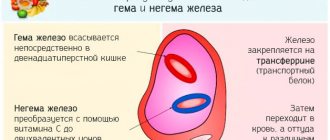What is soy and how is it useful? This question interests almost everyone. What is this connected with? The fact is that recently more and more of the mentioned ingredient has been added to our usual food products. Thus, it began to gradually replace meat, as well as other components.
So what is soy and how is it beneficial? Photos of this product and its features will be presented below.
How do they use it?
Soybean - what is it and what properties do the fruits in question have? Their unique properties allow the production of a wide range of different products.
Before we tell you why soy is harmful, we should tell you that it is very often used as an inexpensive substitute for meat and dairy products. These legumes are also included in feed for farm animals.
What is soy
Soybean is an annual plant related to legumes, that is, to the usual peas, beans, lentils, etc. It is most cultivated in Asia, North and South America, some areas of Africa and Australia and on the islands of the Pacific and Indian Oceans. Soybeans also began to be grown in some European countries, but in much smaller quantities. The second, no less well-known name for soybeans is soybeans.
Soy has become popular mainly because it is rich in complete protein (which contains essential amino acids. The percentage of protein in soy, depending on the variety, can vary from 30 to 50%. That is why soy products are so popular among those who for some reason does not eat animal products.
Soy contains all 8 essential amino acids.
Soy also contains quite a lot of fat - from 16 to 27%.
It must be abolished that soybeans in their natural form are unsuitable for consumption and, in the literal sense of the word, poisonous. Only fermented soy products, i.e. subjected to the fermentation process can be used in food.
Product benefits
What properties does soy have? The benefits and harms (to health) of this product are the subject of frequent debate among many experts. Moreover, most of them consider such fruits to be unique in a number of respects.
Scientists have found that the product in question contains a huge amount of genestein, phytic acid and isoflavonoids. They have an effect that is similar to the action of such a female sex hormone as estrogen. This feature of soybean determines its some healing properties, namely the ability to reduce the risk of cancer.
It should also be noted that phytic acid suppresses the development of benign and malignant tumors, and genestein is a unique substance that slows down the growth of cancer tumors.

Soy products: benefits and harms
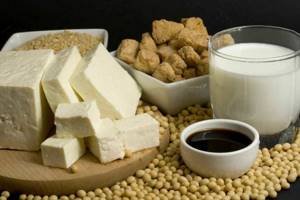
Advertising messages about the benefits of soy are not unfounded. They are based on conclusions obtained from an analysis of the chemical composition of soybeans.
→ Soy is believed to have a positive effect on the hormonal levels of men and women. This is due to the content of phytoestrogens, including isoflavones. The soy diet is also credited with the ability to have a positive effect on the cardiovascular system, lower blood pressure, cholesterol and triglyceride levels, and reduce the risk of diabetes - all due to the absence of cholesterol.
However, soy products are not at all as healthy as soy in its pure form. Popular “low-calorie, high-protein” soy products - bars and shakes - as well as food for vegetarians and fasting people - hamburgers, sausages, meat - are not nearly as harmless as they seem at first glance. They not only lose most of the beneficial substances present in soy, but also contain many completely unnecessary components. Flavor enhancers, flavorings, sugar, fats, refined flour - this is not a complete list of additives included in their composition.
Fermented soybean
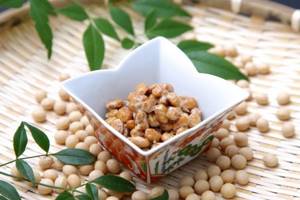
However, do not be alarmed and exclude all soy products from your diet. In order to protect yourself from “harmful” soy, you can use the example of the people of Asia. And eat fermented soy products.
What are the benefits of fermented soybeans? It's no secret that some cereals and legumes contain antinutrients - components that interfere with the absorption of nutrients. In soybeans it is:
- phytates, which interfere with the absorption of calcium, zinc, copper, magnesium and iron;
- trypsin inhibitors, which suppress digestion and increase the risk of pancreatic diseases;
- hemagglutinin, which causes blood cells to stick together.
If in the case of other legumes, several hours of soaking in water is enough to neutralize antinutrients, then in the case of soybeans, only fermentation (fermentation) makes it suitable for consumption. Among other things, fermentation adds probiotics (live bacteria that strengthen the immune system) and nutrients to soy. By the way, the inhabitants of Okinawa, who rank first in the world in terms of the number of long-livers, eat fermented soybeans.
Fermentation turns soy into a healthy product, making it a source of vitamin K2 (responsible for the formation of bone tissue). This is important for the prevention of osteoporosis and cardiovascular diseases.
Fermented soy products include:
- Miso is a thick paste rich in vitamin B12.
- Tempeh is a compressed flatbread rich in vitamins (B2, B6 and B3) and minerals (magnesium, copper, iron, manganese and phosphorus).
- Natto is a traditional Japanese product that contains the enzyme nattokinase (reduces the risk of blood clots and helps break up plaques).
- Soy sauce is a delicious seasoning that came from Japan.
Basic properties
Soybean - what is it and what are its properties? Soy products that have been obtained by fermentation are very often included in the daily diet of both adults and adolescents. Such dishes are used not only as a preventive measure, but also for the treatment of diathesis, diabetes, various types of allergic reactions, urolithiasis and cholelithiasis. Moreover, soy is indicated for diseases of the cardiovascular system and liver.
Not long ago, experts discovered that the product in question contains lecithin, acetylcholine and phosphatidylcholine. These substances effectively restore and reconstruct brain cells and nervous tissue, and also have a beneficial effect on learning, thinking abilities and memory.
It should also be said that all of the above-mentioned elements play an important role in supporting the sexual function and reproductive system of a person. In addition, they restore strength after mental and moral stress, and also support the patient’s motor activity.
What else is the product in question useful for? Lecithin, which is part of it, is able to control cholesterol levels in the blood, enhance the metabolism of adipose tissue and participate in other metabolic processes of the body. This component also inhibits tissue degradation and the aging process, reduces signs of arteriosclerosis, treats amnesia, muscle dystrophy and glaucoma.
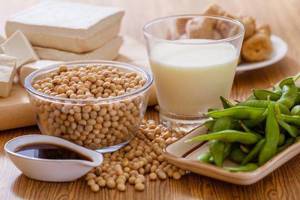
What are the health benefits of soybeans?
The composition of soy protein includes all replaceable and essential amino acids, and in terms of quality indicators it is close to the protein of eggs, milk and meat. Therefore, bean powder is added to many modern products: baked goods and candies, sausages and frankfurters, milk powder, mayonnaise and margarine, pasta, and semi-finished products.
The beneficial properties of soy are well known to residents of Asia, where it has been consumed for a long time. For example, the use of this product will be useful for those who are obese - on a soy diet you can lose weight, while receiving all the same substances necessary for proper nutrition as when eating meat and meat products. At the same time, even from a small amount of soy products, a feeling of fullness quickly sets in and does not go away for a long time, which allows a person not to overeat. This ultimately leads to the fact that the weight is gradually reduced, and new ones do not accumulate.
Lecithin, which is contained in beans, affects the metabolism of cholesterol and fats: it reduces the concentration of fats in the liver and regulates their absorption, reduces the production of cholesterol, and it also has a choleretic effect.
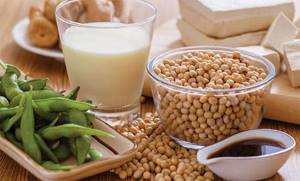
Due to the presence of retinol and tocopherol, soy exhibits antioxidant properties, fights free radicals and restores cellular structure if it has been damaged. Soy products can be consumed by those who are allergic to animal proteins, and therefore cannot consume milk and meat for this reason.
It is useful for patients with diabetes and cardiovascular diseases. It prevents the formation of tumors and premature aging of tissues and organs. Soybean vitamins help maintain visual acuity and clear picture perception, and maintain healthy skin and mucous membranes.
The health benefits of soy include the fact that consuming beans prevents the development of the following diseases: atherosclerosis, diabetes and arthritis, hepatitis, anemia, psoriasis, hypertension, stomach ulcers, cancer, gastric disorders, cholecystitis and constipation.
The effect of soy on women's health
How is soy beneficial for women? The substances included in its composition regulate the content of estrogen in the blood, thereby preventing the formation of breast tumors, which is very important for older women. There is evidence that beans contain substances that are found in drugs used in the treatment of cancer patients. But the advantage of soybeans over them is that they do not have side effects, as happens with synthetic drugs. That is why doctors prescribe soybean dishes to women in the treatment of cancer.
The hormonal effect of soy on the female body is also expressed in the fact that it prevents the development of osteoporosis and reduces the unpleasant manifestations of menopause in women who have reached the appropriate age. For obese women, consuming soy will help them lose weight and maintain it at normal levels in the future.

The effect of soy on men's health
Is soy good for men? More likely no than yes, and this is due to the effect on their body of the same phytohormones, which in composition resemble estrogen. As you know, estrogens are androgen antagonists, therefore, if soy benefits women precisely because of the action of these substances, then for men it is just the opposite.
It is believed that consumption of soy products has a negative impact on the quality and quantity of sperm. In obese men, this effect is even more intense due to the ability of adipose tissue to produce its own estrogen. There is also evidence that beans have a negative effect even on the reproductive system of babies who are fed infant formula containing it: in the future, upon reaching adulthood, they have problems with the development of the testicles and the production of sperm.
At the same time, the fact that soybeans have been one of the staple foods in many Asian countries for centuries, but this has not affected population reproduction in any way, suggests that the danger of soybeans in this regard is exaggerated.
We recommend reading
What is asparagus, where and how does it grow?
The benefits and harms of asparagus for the human body
How to grow asparagus in open ground and care for it
How to grow Jerusalem artichoke in open ground
Why is soy harmful in foods?
In addition to the impressive list of beneficial properties of the product in question, it also has a large number of harmful qualities. By the way, the latter can easily negate all the benefits of its use in the daily diet.
Most soy products available in the local market are hazardous foods. The only exception is food that was obtained through fermentation.
The most dangerous is genetically modified soybean. Experts say that such an ingredient is contaminated with herbicide residues and does not contribute at all to maintaining normal health.
Soy protein isolate
The products often contain not pure vegetable protein, but soy protein isolate. This substance is obtained from soybean concentrate. During processing, the protein is separated and isolated from all other substances. The isolate contains about 90 - 95% protein and a small amount of plant fiber.
Soy protein isolate contains many beneficial microelements. These substances are classified as antioxidants. They protect the body's cells from harmful influences. Microelements also speed up metabolism. Therefore, soy products are often included in diet menus for weight loss.
Soy protein isolate is not without its drawbacks. After processing, there are very few amino acids left in it. This protein is slowly absorbed by the body. In addition, low-quality isolate may contain harmful substances.
In Adygea, a huge hail damaged cars and roofs of houses
Top tourist attractions in The Hague: 120 meter long painting
The daughter of Vdovichenkov and Filippova turned 15 years old. She got the best of both
Athletes and bodybuilders often include soy products in their diet. However, soy protein isolate does little to promote muscle gain. For sports nutrition, foods rich in milk and whey proteins are more suitable.
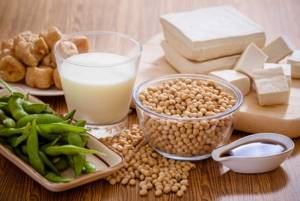
How does it affect human health?
In the course of numerous studies, experts have found that regular consumption of soy products causes the development of gastrointestinal diseases, thyroid dysfunction, diseases of the immune system, disorders of reproductive function and cognitive abilities, as well as infertility, heart problems and even cancer.

Here are some of the consequences that have been associated with frequent consumption of soy and soy products:
- mammary cancer;
- stones in the kidneys;
- brain damage;
- food allergies (serious forms);
- disturbances in the functioning of the thyroid gland;
- diseases of the immune system;
- sexual dysfunction in women.
It should also be noted that American scientists found that among those members of the stronger sex who consumed soy products 3 times a week for a long time, the risk of developing Alzheimer's disease increased almost 2 times. Also, the abuse of this food often led to weakening of memory, a decrease in brain mass and disruption of thought processes.
Are the harms of soy exaggerated?
You can often hear opinions about the dangers of soy products. However, nutritionists believe that the dangers of soy are exaggerated.
Abnormal cold will come to the European part of Russia, Siberia and the Urals
Royal Enfield has released a women's collection of motorcycle equipment for the first time
Basil is healthier than we think: Mexicans eat it to lower cholesterol
The following harmful properties are usually attributed to soy foods:
- Ability to cause hypothyroidism. Soy products do affect thyroid function. But they can only cause harm if there is iodine deficiency in the body. Therefore, in eastern countries, seaweed is always consumed along with soybeans. However, if you already have problems with the thyroid gland, then it is better to exclude soy products from the menu.
- Increased risk of Alzheimer's disease. This pathology has a complex origin; it is based on the death of neurons. The harmful effects of soy phytoestrogens on brain cells have not been proven by science.
- The ability to provoke the appearance of stones in the kidneys and bladder. Soy is rich in vegetable protein. Excessive consumption of such food can cause urolithiasis. However, this applies to any type of protein food, not just soy products.
We can conclude that the harm of soy has not been proven. However, this does not mean that this product can be eaten in unlimited quantities. If you completely switch to a soy diet, your body will suffer from a deficiency of nutrients. Soy protein is not as rich in micronutrients as milk or meat protein.
Negative impact on humans
As mentioned above, soy contains phytic acid. Its excessive intake into the body helps to block the full absorption of zinc, calcium, iron and magnesium. In addition, using soy products, scientists have learned to control the birth rate of laboratory animals. The fact is that in large quantities, phytoestrogen can suppress the reproductive function of the body and significantly reduce its ability to conceive.
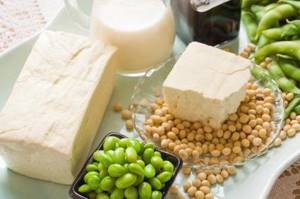
It should also be noted that many manufacturers add soy to infant formula. This often leads to early puberty in girls and developmental (physical) disorders in boys. In this regard, the introduction of soy products into baby food is completely unacceptable.
Calorie content and chemical composition
Soy, like no other plant product, has an extremely rich chemical composition. Per 100 grams of raw material, the grain of this representative of the Legume family contains 36.7 g of protein, 17.3 g of carbohydrates, there are even fats - 17.8 g, including Omega-3 and Omega-6 fatty acids, which make up more than half all fats. There is only 12 g of water in 100 g of product, 13.5 g of fiber.
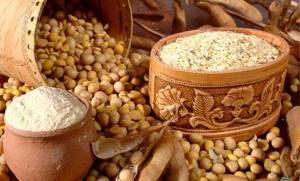
In addition to the high percentage of protein, the chemical composition of soy can highlight vitamins and minerals, which are contained there in large quantities. For example, by eating just 100 g of product, you can satisfy the daily requirement for vitamins such as B1, B4, B5, B6, B9, PP by 35-65%, and vitamin H by as much as 120%. In addition to these substances, soy contains vitamins B2 and E (12% of the daily value each) and small amounts of retinol and carotene (less than 2%).
There are also plenty of minerals in soybeans. In 100 g of product you can find from 1/3 to 2/3 of the daily requirement of elements such as potassium, calcium, magnesium, sulfur, phosphorus, iron, copper, chromium and zinc. There is even more manganese, molybdenum, cobalt and silicon - there are so many of them in soybeans that 100 g of the product can cover from 140 to 590% of the daily human requirement for these minerals.
In addition to being rich in vitamins and minerals, the product is distinguished by its nutritional value. The calorie content of soy is 364 kcal, which makes it one of the highest calorie foods of plant origin. Soybeans are also known for their nutritional value, which consists of a large amount of complete protein, the quality of which is close to animal, minerals and vitamins, and high overall nutritional value.
Soy products include:
- soya beans
- soy flour
- soy milk and yogurt
- tofu (also called bean curd or soy cheese
- soybean oil
- natto
- pace
- soy sauce
- Soy meat
- soy protein
There are many more varieties of products that are made with the addition of soy - mayonnaise, desserts, sausages, etc. But all of them are rather derivatives of the above.
The most interesting thing is that most semi-finished products consisting of soy products contain unfermented soybeans, which have not undergone the necessary long fermentation process, and therefore are unsuitable for food.
GMO soybeans
Another ambiguous aspect of the soybean issue is its “type.” Soybeans grown in Asia are generally "natural". Most soybeans grown in the United States today are genetically modified, i.e. obtained by introducing additional genes that were not originally present in a given plant. In particular, the enzyme gene is considered a “possible carcinogen” for humans. The import of transgenic soybeans is allowed almost all over the world, and, accordingly, the soy products that you see on store shelves may well be from GMO grains.
I think that the question of the harmfulness/harmlessness of transgenic soybeans should not be considered separately from other GMO products. It is rather a question of whether genetically modified foods can be eaten at all.
Fortunately, in Russia, for example, labeling of GMO soy products is mandatory. Therefore, when purchasing soy products, you will be aware of how it is grown. In Europe, too, no one strives to “keep the big secret” of GMO soy - you just need to pay attention to the information on product labels.
Soy diet
The soy diet usually involves replacing regular foods with soy counterparts. For example, regular cow's milk should be replaced with soy milk, regular meat with soy milk and, for example, tofu should be included in your diet. There may be many substitutions and variations, but I think the essence is clear.
Such measures are often resorted to by people who do not eat meat and animal products in general. But is it worth doing this for those who just want to lose weight?
The very first thing that advocates of the soy diet usually mention is that it is rich in protein, which means it promotes not only weight loss (with a calorie deficit, of course), but also the preservation of muscle mass, which, together with physical activity, allows you to achieve muscle definition. Those. in fact, it is credited with all the classic characteristics of protein diets (and, accordingly, the disadvantages too). In my opinion, completely replacing all soy products with soy products is still not the best solution, because this turns your diet almost into a mono-diet, and as you know, it is impossible to satisfy all the body’s needs for vitamins by eating mainly one product.
The second point in the positive aspects of a diet on soy products is their lower calorie content, compared to their “animal” counterparts. I don't see much difference here. For example, the calorie content of soy milk with a fat percentage of 1.8% is 54 kcal. Regular milk of the same fat content contains 46 kcal. Soy meat with a fat content of 1g per 100g contains approximately 296 kcal. Lean beef with a fat content of 7 g has 158 kcal. And in 100 g of chicken breast, for example, 1 g of fat and 110 kcal. But, of course, it should be noted that the protein content in soy meat is almost 2 times higher. I think there is no point in continuing such comparisons, because even though different manufacturers of CBJ products will differ, in my opinion, there is no reason to consider soy products significantly less nutritious.
In addition, there is an opinion that soy products are cheaper than “regular” ones. Honestly, when shopping I see a diametrically opposite situation - soy products are found in special food departments and, most often, even more expensive. But perhaps I came across such stores, because different retail chains have different suppliers. I cannot draw conclusions about the cost of soy products on this basis.
Among the disadvantages of soy, it should be mentioned that this product is not typical for our region and causes problems with the digestive system for many people. And, of course, the possibility of a food allergy is not excluded, but this applies to absolutely all food products.
In addition, the availability of soy products varies in all regions and I can assume that not every retail chain provides a wide selection of these products.
But all these are “flowers”, and the most important “feature” of soy products is that they are characterized by such different effects on the body that they can be both useful and dangerous. And this will be discussed below.



